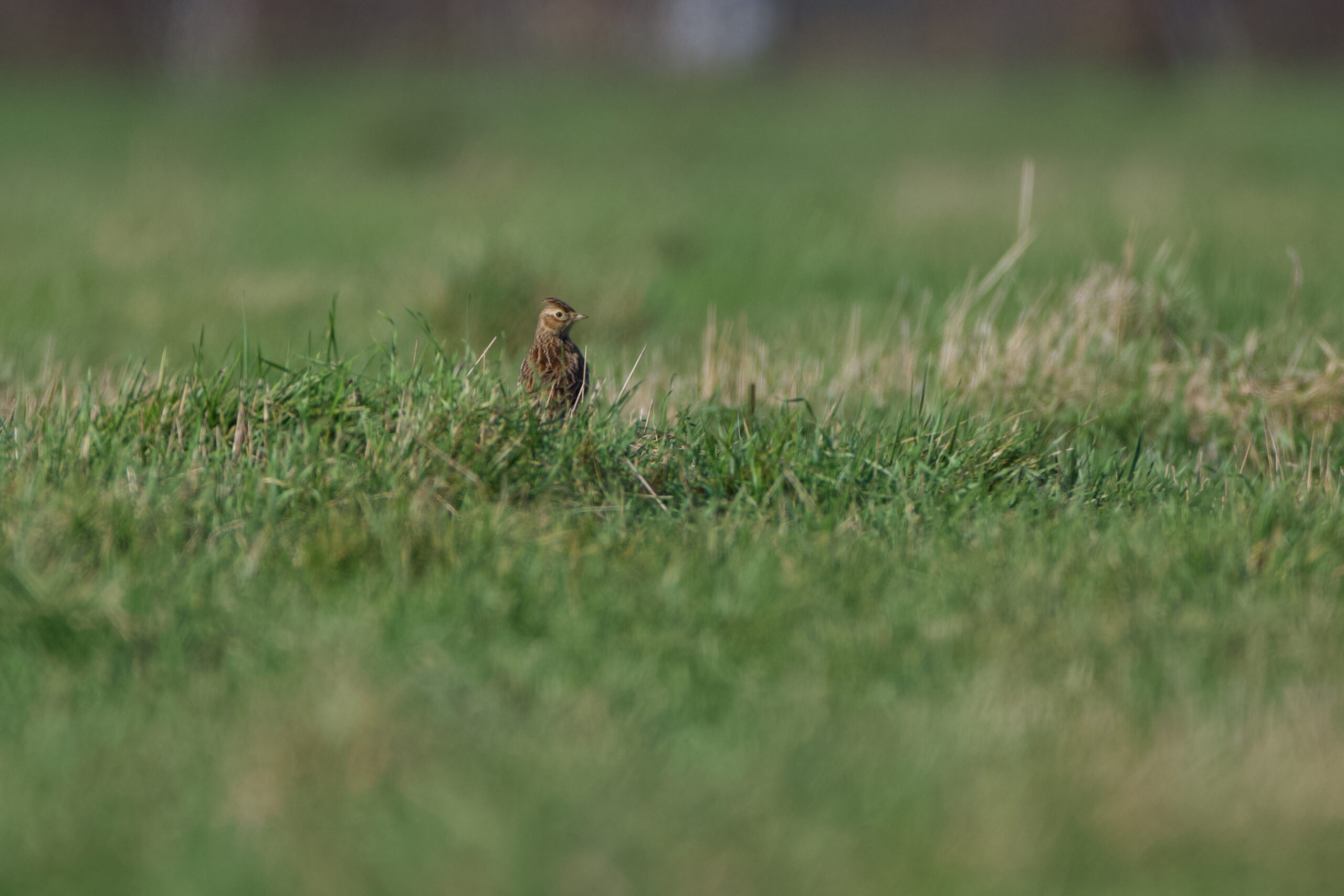On a walk through Warren Farm Nature Reserve, I spotted the first Skylarks of the season. Their arrival marks the start of nesting time.
Skylarks nest on the ground and don’t like to be surrounded by vantage points that predators could use to prey on their chicks. Which is why the 61 acres of open space at Warren Farm Nature Reserve attracts a quarter of London’s breeding population.
The meadow is only cut back in winter, so by around April when the Skylarks begin to lay their eggs they will have some natural cover to help keep them hidden. In the last 40 years their population has declined by 60% so it’s great to see a red-list species flourishing locally.
I’m looking forward to the challenge of capturing a skylark in flight this year. Since they nest on the ground, they are usually hidden in the long grass, so you never know where they will pop up.
The males have a distinct mix of whistles and warbles that give them away, sometimes singing for five minutes straight. They climb so high they are almost out of sight and will hover overhead and then descend back down whilst performing their unbroken melody. Their distinct song has a dual purpose: to defend their territory and attract a mate.
As the skylark heads back down, its song slows and shifts to a minor key, so you can tell whether it is going up or down just by the sound.
According to my Book of British Birds, this trait inspired an old country tale. People say the skylark sings with joy as it soars toward Heaven, but after St. Peter turns it away, its song takes on a sadder note on the way back down.
Skylark song facts
- They are the only British bird that sings while ascending, hovering and descending
- The skylark uses circular breathing to keep its song going without a break, much like a didgeridoo
- Their song can last for up to an hour
- Skylarks have inspired many poets, including William Wordsworth in To the Skylark and Percy Bysshe Shelley in To a Skylark.


Leave a Reply